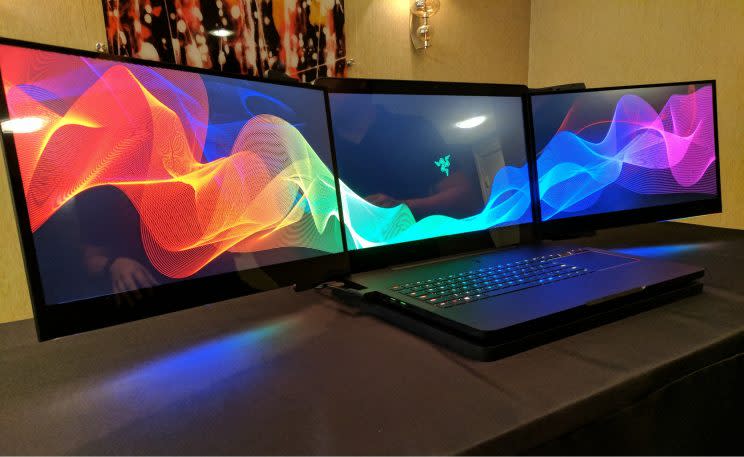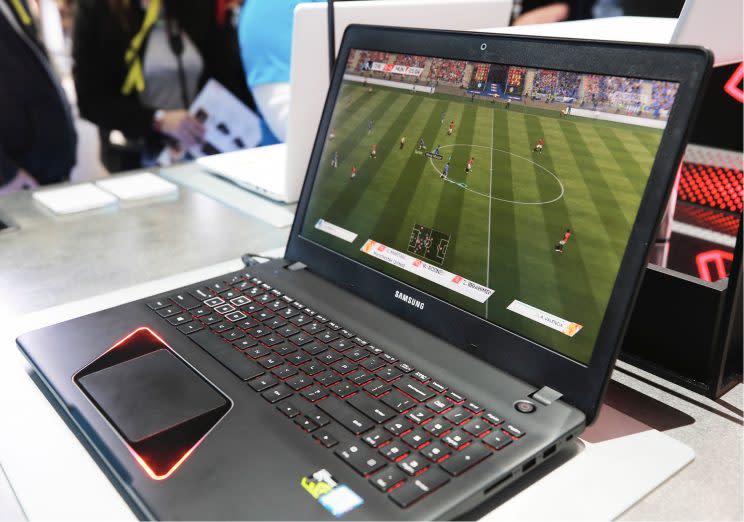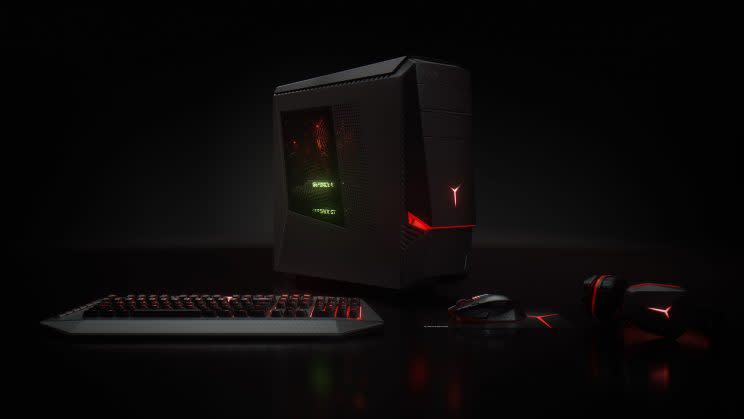Why PC companies are making big bets on gamers

The PC market isn’t what it used to be. As more people rely on their smartphones rather than desktops or laptops, sales of PCs have fallen precipitously. In fact, last year marked the fifth consecutive year of sales declines, according to Gartner Research. But PC makers aren’t calling it quits. Instead, companies like Samsung, Lenovo, HP and others are pushing out high-end laptops and desktops built for today’s PC gamers.
The reason? PC gaming is on the upswing. While PC sales as a whole have certainly fallen, the more niche PC gaming market has been growing. Gartner analyst Mikako Kitagawa says the firm expects to see the gaming portion of the PC industry to see a 7% compounded annual growth rate, while the overall market will decrease by 2%.
“Generally, PCs have become less important devices for many consumers due to the high usage of smartphones. This is creating stagnation in the consumer PC market,” Kitagawa explained. “However, PCs are very important devices for select consumer groups. Gaming is one of the big drivers for these consumers to use PCs. They have shorter life-cycles so that market grows faster than rest of the PC market.”
So what’s the deal with this growth? Well, it turns out PC gaming, which some industry watchers were once ready to consign to the dustbin, is experiencing a bit of a renaissance thanks to a number of factors ranging from the rise of esports to a growing Chinese gaming market. And it’s only going to grow more from here, as new technologies like virtual reality begin to mature.

PC gaming is on the upswing
Video game tournaments are nothing new. Gamers have been facing off against each other in local arcade games like “Street Fighter” and PC games like “Quake” for years. But the enormous, stadium-filling professional esports tournaments you see today really took off within the last decade with launch of the Twitch game streaming service and similar offerings that drew in more players.
The most popular esports game in the world at the moment is Riot Games’ “League of Legends.” Known as a multiplayer online battle arena (MOBA), “League of Legends” pits two teams of players against each other with the goal of destroying each others’ bases. With tournament series held everywhere from China and Germany to New York’s iconic Madison Square Garden, the game is an absolute juggernaut. It’s such a force that MLB Advanced Media recently made a $350 million deal with Riot Games to help the company monetize “League of Legends.”
Naturally, the interest in “League of Legends” and esports in general has helped to draw more gamers to PCs. It helps that “League of Legends” is only available on PC and Mac. Games like Valve’s “Counter Strike: Global Offensive,” another huge esports title, and Blizzard’s “World of Warcraft,” which is still going more than 12 years after its initial release, have also drawn more gamers to PCs.
The rise of China’s middle class, coupled with the fact that the country held a 14-year ban on game consoles like Sony’s PlayStation, Microsoft’s Xbox and Nintendo’s Wii and Wii U, helped give rise to one of the largest PC gaming markets on Earth.
It’s not just the gaming titles, though. It’s the ease by which gamers can access them. Valve’s Steam game distribution service, which is only available on PC and Mac, allows players to purchase and download new and classic games with the click of a mouse.

Then, of course, there is the nascent virtual reality market. Two of the current top-of-the-line headsets, Facebook’s Oculus Rift and HTC’s Vive, are only available for PC and require the kind of powerful systems designed for high-end gaming.
A need for speed
In fact, to play most of today’s popular PC gaming titles, gamers need fairly high-powered systems with lightning-fast processors and beefy graphics chips. Much to the benefit of manufacturers, those kinds of PCs sell at a higher margin than mainstream and entry-level computers. So the more gaming PCs a company can sell, the more it stands to gain.
But you can’t just buy a gaming PC and call it quits. Game developers are continually pushing the limits of current technologies. And as games become more demanding, the hardware that was once cutting-edge begins to show its age.

It’s exactly what happens when you hold on to your average laptop for something like six years. For gamers, though, that change happens much faster. That’s especially true if you want to get the best performance out of a gaming system. It seems like one day you might have the best graphics chip or CPU around, and the next, it’s being bogged down by a new, power-hungry game.
That’s why PC gamers upgrade their systems at a faster clip than mainstream consumers. They want the best of the best to ensure the games they play look gorgeous and run smoothly.
And that’s the exact market that PC makers hope to capitalize on with new, impressive laptops and desktops running the latest hardware available.
Continued growth
The question then is: Will the PC gaming market be able to buoy the industry as a whole? Unfortunately, that’s unlikely to happen. There are a large number of PC gamers in the world, but not nearly enough to keep the market from continuing to falter.
Still, the gaming segment will keep growing as virtual reality technologies improve and draw in more consumers. So if you’re a gamer, the next few years should provide plenty of opportunities for newer, flashier, more impressive PCs. And if you’re not a gamer, then there’s never been a better time to start.
More from Dan:
Here’s how Whitehouse.gov and the @POTUS Twitter handle are changing
Oculus could cost Facebook up to $11 billion, but it could be worth it
2018 Ford Mustang brings an American icon into the modern era
Salesforce CEO: I’m not changing how I run my business under Trump
Why Nintendo’s Switch console is crucial for the company’s future
Comcast: Out new app will make fixing your internet much less frustrating
Fitbit CEO: We’re trying to shift the way people perceive us
Email Daniel at dhowley@yahoo-inc.com; follow him on Twitter at @DanielHowley.

